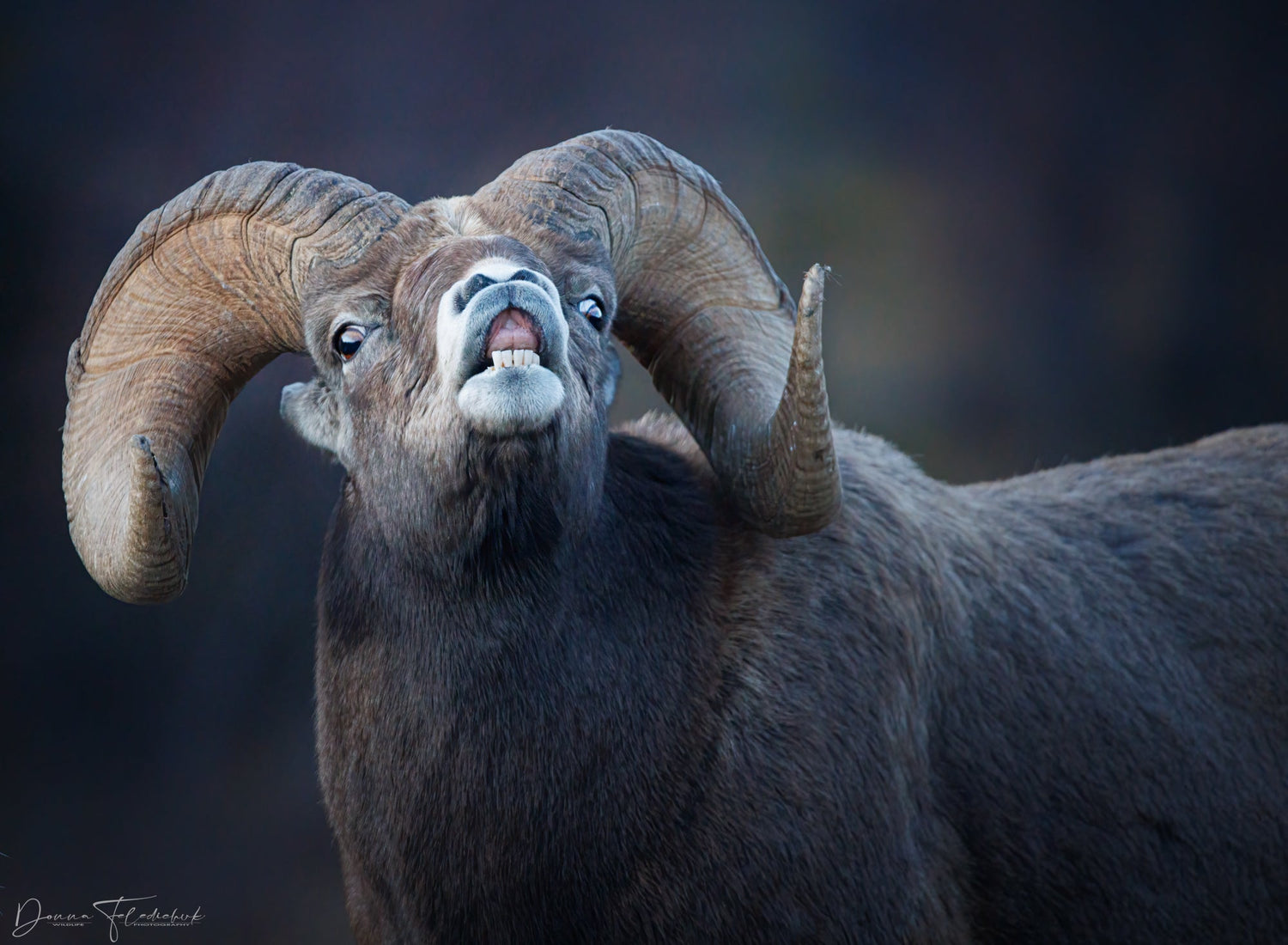
It is Rut Season: Capturing Wildlife at Their Peak
A bighorn ram calling for females
It is the rut season. The time when antlers tangle and horns clash. It is the time to photograph the males at their physical finest. For me, I am chasing the rut from mid-August to the end of November. Starting with the Bison with all their might pushing each other around in August and ending with the Bighorn sheep clashing horns in the early winter, it is a great time for photography.

A bull moose in fall colors
The males have a single focus and frequently in many species, they do not ever eat during this time. With one thought and one thought only on their mind, they will follow the scent of females anywhere. I remember a few years back I was driving down a small secondary highway in the late fall. I could see a female moose on a steady trot having emerged from the forest, running along its edge and then she come into the ditch and crossed the road. I stopped to watch her when I heard the big crashing through the trees. The male was storming through the forest he burst out onto the field at the edge of the trees and was moving fast. I jumped out of my vehicle went to the back side of my vehicle and crouched by the rear bumper as I waited close by where the female had crossed the road. Sure enough, a few minutes later the male came rushing by pursuing the other moose. He paid no attention to me or the oncoming vehicles he was on a mission to get his gal.
>

A pair of bighorn rams tussle during the rut
During the rut season, the males are larger than at any other time of the year as their bodies swell with the large influx of hormones. Their antlers have lost their velvet and are at the season's largest, and the fall colors make a glorious backdrop. This is the time to photograph the males!
If you are planning on photographing during the rut here are a few pointers
1. Go out in the early morning or late evening when the temperatures are low. Males are more active in lower temperatures and as the day heats up they slow down in their mating actions. So you are less likely to see them battling in midday. Your best time to observe this is early morning when it is the coolest.
2. Make sure you get the entire set of antlers or horns in your photo. I know this is obvious but you would be surprised how easy it is for an elk to move and instantly have the rack gone from view.
3. Situate the male in the landscape. Paint the scene, there are lots of headshots of big bucks or bulls and while they look great on Instagram they won't sell you any prints or win you any contests. But a bull moose in the fall colors situated in a scene just might.
4. Serious harm can occur from a set of antlers or horns and can be compounded with hoofs. Stay safe and keep your distance, males at this time of the year are aggressive. You should never approach a male and make sure you have a quick escape route should one charge.
5. Early morning is a great time to catch the breath of the animal. In the cool morning air, these can make great B&W images.
6. Find the perfect location where you would like to photograph your subject and simply sit there and wait. Do not follow the animal but instead wait. This could take 5 minutes it might take 5 days but if it happens you are going to have a winning photo.

A bull elk in the cold early morning converted to B&W
Best of luck and enjoy the rut season!

